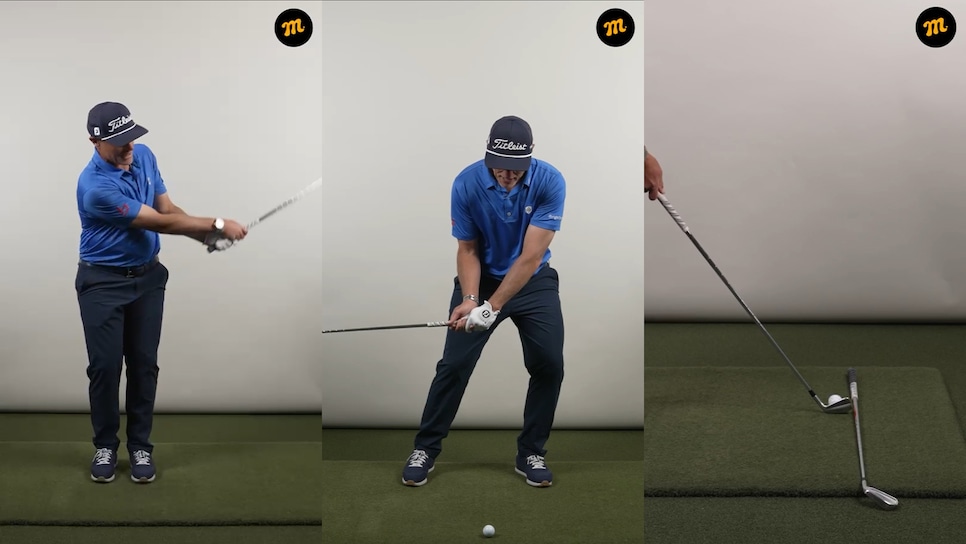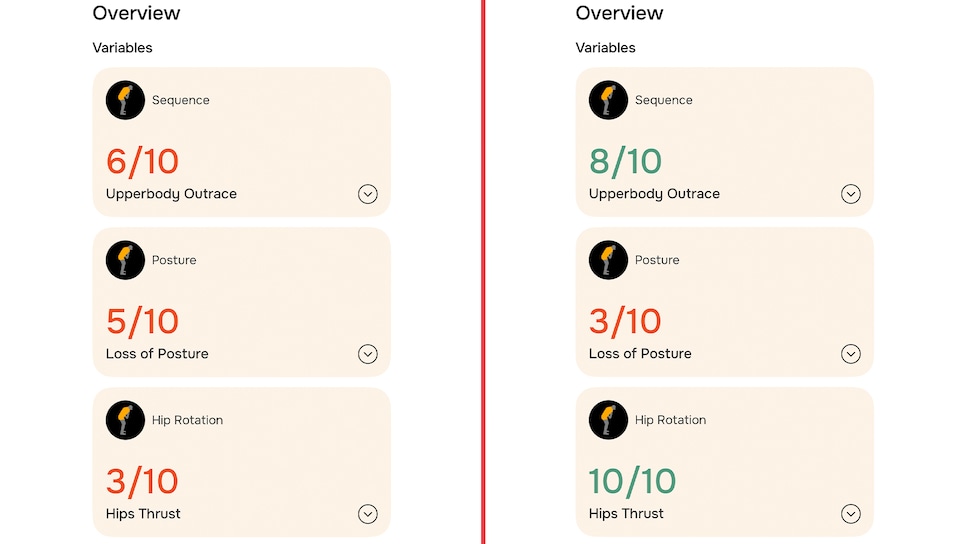How a week of AI golf lessons helped one of my biggest swing faults – Australian Golf Digest

- by Admin
- November 18, 2024

Living in New York City, I do the majority of my practice on indoor simulators, which means I see plenty of videos of my swing. It also means I usually have a decent enough understanding of my tendencies to know what’s happening when something is off. That’s why, when I noticed that my swing path through impact was getting excessively in to out, I was surprised I couldn’t solve it on my own.
I tried everything I could think of for months, working on my takeaway, my follow-through and everything in between. Regardless of what I tried, I was constantly either hooking drives to the left or blocking them so far right they were in the next fairway.
Finally, I turned to a new instructor: Artificial Intelligence.
I uploaded a video of my swing to Mustard Golf, a motion-analysis and coaching app where you can submit your swing, have it read and evaluated by Mustard’s computer-vision technology and get a personalized plan for improving your technique.
(Editor’s note: Golf Digest is a minority investor in Mustard and has consulted with the company on the analysis, diagnostic process and instructional content in the app.)
Before uploading my swing, I was under the assumption that the fault I was struggling with had something to do with my hand path. But through a system that looks at swings using 3D data models powered by AI, Mustard identified an issue I hadn’t even considered.
My first swing uploaded to Mustard got a 6.3/10 overall score—not bad. But instead of pointing to my hand path, Mustard noted the root cause of my excessively in-to-out swing path was coming from my hip turn, or lack thereof. On the Mustard scale, my hip rotation was a 3/10.
It turns out I’d become so concerned with my hands that I was forgetting one of the most important parts of the swing: turning my hips through impact. This wrecked my sequencing, causing a power loss and inconsistent contact. The lack of turn also caused me to thrust my hips toward the ball at the last second before impact, which was the true cause of my in-to-out path.
With my main issue identified, I turned to the prescribed drills. In the app, I was given six drills from Golf Digest’s No. 1 Teacher Mark Blackburn to use at home. After trying them all at least once, I found three that I felt worked best for me and committed to doing each of them for at least 15 minutes a day for a week.
I was able to start training my hip turn and sequencing through a combination of the step drill and a punch shot drill (above). Once I felt confident in my ability to turn my hips through, I took the app’s recommendation of setting a visual aid just outside the ball (above, right) to remind myself not to thrust at impact and to keep my posture throughout the downswing.
I quickly found myself gaining 3 to 5 miles per hour of clubhead speed on the simulator, finding the center of the clubface more consistently and, most importantly for me, getting a proper hip turn that created a swing path that was much less in to out and far easier to control.
I was amazed at how just a few drills turned my swing around in such a short amount of time. I uploaded my swing again after training for a week and was greeted with a 7.1/10 overall score—as well as a 10/10 hip rotation score!

Left: scores from swing before drills. Right: scores from swing after drills.
Don’t get me wrong, there’s still plenty to work on in my swing, but the validation of an improved score felt great. Now, along with lower scores on the golf course, I’ll be chasing a higher swing score each week on the app.
Mustard Golf is available in the Apple App Store. Users can upload a video and see their top swing fault for free. Premium features come with monthly or annual subscriptions.
This article was originally published on golfdigest.com
The Latest News
-
December 23, 2024‘Puts golf on the map here’: Ryan Fox praises Rory McIlroy visiting New Zealand’s Tara Iti, Te Arai – Australian Golf Digest
-
December 23, 2024Freedom Boat Club Announces its 10th Australian Location with its Newest Location Offering Direct Access to the Iconic Brisbane River – Marine Business News
-
December 23, 2024Highfield and Australian Sailing team up in RIB support – Marine Business News
-
December 23, 2024‘I felt horrible’: How Brett Lee went from an ill-fated threat to Test stardom in four balls
-
December 23, 2024QuickWin Casino: Your Fast-Track to Winning in Australia – Fantasy Football 247 – Premier League Tips





